Hyper Mesh
— London
2019
![]()
Hyper Mesh brings together new work from eight international artists; Jonathan Baldock, Pauline Bastard, fleuryfontaine, Holly Hendry, Jessie Makinson, Morgan Wills and Fani Parali.
Comprising of painting, sculpture, moving image and performance, the exhibition explores contemporary notions of identity, and sets out to examine how identity structures could be re-imagined or reconstructed.
Hyper Mesh takes the concept of “Mesh” in relation to the theories developed by eco-theorist and philosopher Timothy Morton (1), who pioneered the principle of interconnected systems in life forms (2). Morton’s research proposes that beings of different kinds including human, animal, vegetable and mineral are connected and coexist within the same network structures – a mesh that is infinite and beyond concept.
Inspired by the idea of an interconnected network, Hyper Mesh offers multiple interpretations of identity, from the geological to the administrative, the personal to the global.
Collaborative artists fleuryfontaine address the limits of the flag as a symbol of identity using silicone tinted with pigments. Pauline Bastard questions the construction of the self and the credibility of the administrative mazes that we navigate on a daily basis. Showing for the first time in the UK will be a three-screen presentation of her digital work “Alex”.
Approaching the subject through the fictional or the fantastic, Fani Parali’s newly commissioned performance ‘Angels like Buildings’ creates gender-fluid identities that encompass Greek mythology and folklore; Jessie Makinson new works evokes contemporary ideas of femininity mixed with cultural appropriation, using multi layered landscape imagery; Jonathan Baldock’s sculptures playfully revisit the values of the mask by revealing characteristics of today’s societal vices; through painting Morgan Wills interrogates issues related to the formation of the self, using the human figure to continually abstract and distort preconceived ideas about the formation of the body; Holly Hendry’s sculptures speculate on the remains or ‘evidence’ of human identity in the geologic strata that will characterise the Anthropocene.
1 Morton, T. (2011). ‘The Mesh’, Environmental criticism for the twenty-first century. ed. by Stephanie LeMenager and others (New York: Routledge, 2011). http://www.academia.edu/1046913/The_Mesh
2 Blasdel, A. (2018). ‘A reckoning for our species’: the philosopher prophet of the Anthropocene. [online] the Guardian. Available at: https://www.theguardian.com/world/2017/jun/15/timothy-morton-anthropocene-philosopher[Accessed 20 Dec. 2018].
— London
2019

Hyper Mesh brings together new work from eight international artists; Jonathan Baldock, Pauline Bastard, fleuryfontaine, Holly Hendry, Jessie Makinson, Morgan Wills and Fani Parali.
Comprising of painting, sculpture, moving image and performance, the exhibition explores contemporary notions of identity, and sets out to examine how identity structures could be re-imagined or reconstructed.
Hyper Mesh takes the concept of “Mesh” in relation to the theories developed by eco-theorist and philosopher Timothy Morton (1), who pioneered the principle of interconnected systems in life forms (2). Morton’s research proposes that beings of different kinds including human, animal, vegetable and mineral are connected and coexist within the same network structures – a mesh that is infinite and beyond concept.
Inspired by the idea of an interconnected network, Hyper Mesh offers multiple interpretations of identity, from the geological to the administrative, the personal to the global.
Collaborative artists fleuryfontaine address the limits of the flag as a symbol of identity using silicone tinted with pigments. Pauline Bastard questions the construction of the self and the credibility of the administrative mazes that we navigate on a daily basis. Showing for the first time in the UK will be a three-screen presentation of her digital work “Alex”.
Approaching the subject through the fictional or the fantastic, Fani Parali’s newly commissioned performance ‘Angels like Buildings’ creates gender-fluid identities that encompass Greek mythology and folklore; Jessie Makinson new works evokes contemporary ideas of femininity mixed with cultural appropriation, using multi layered landscape imagery; Jonathan Baldock’s sculptures playfully revisit the values of the mask by revealing characteristics of today’s societal vices; through painting Morgan Wills interrogates issues related to the formation of the self, using the human figure to continually abstract and distort preconceived ideas about the formation of the body; Holly Hendry’s sculptures speculate on the remains or ‘evidence’ of human identity in the geologic strata that will characterise the Anthropocene.
1 Morton, T. (2011). ‘The Mesh’, Environmental criticism for the twenty-first century. ed. by Stephanie LeMenager and others (New York: Routledge, 2011). http://www.academia.edu/1046913/The_Mesh
2 Blasdel, A. (2018). ‘A reckoning for our species’: the philosopher prophet of the Anthropocene. [online] the Guardian. Available at: https://www.theguardian.com/world/2017/jun/15/timothy-morton-anthropocene-philosopher[Accessed 20 Dec. 2018].
Assembly Point
— 18 Jan to 23 Feb 2019
Artists
Jonathan Baldock
Pauline Bastard
fleuryfontaine
Holly Hendry
Jessie Makinson
Fani Parali
Morgan Wills
Curator
Alice Bonnot
Assistant
Iseult Enright
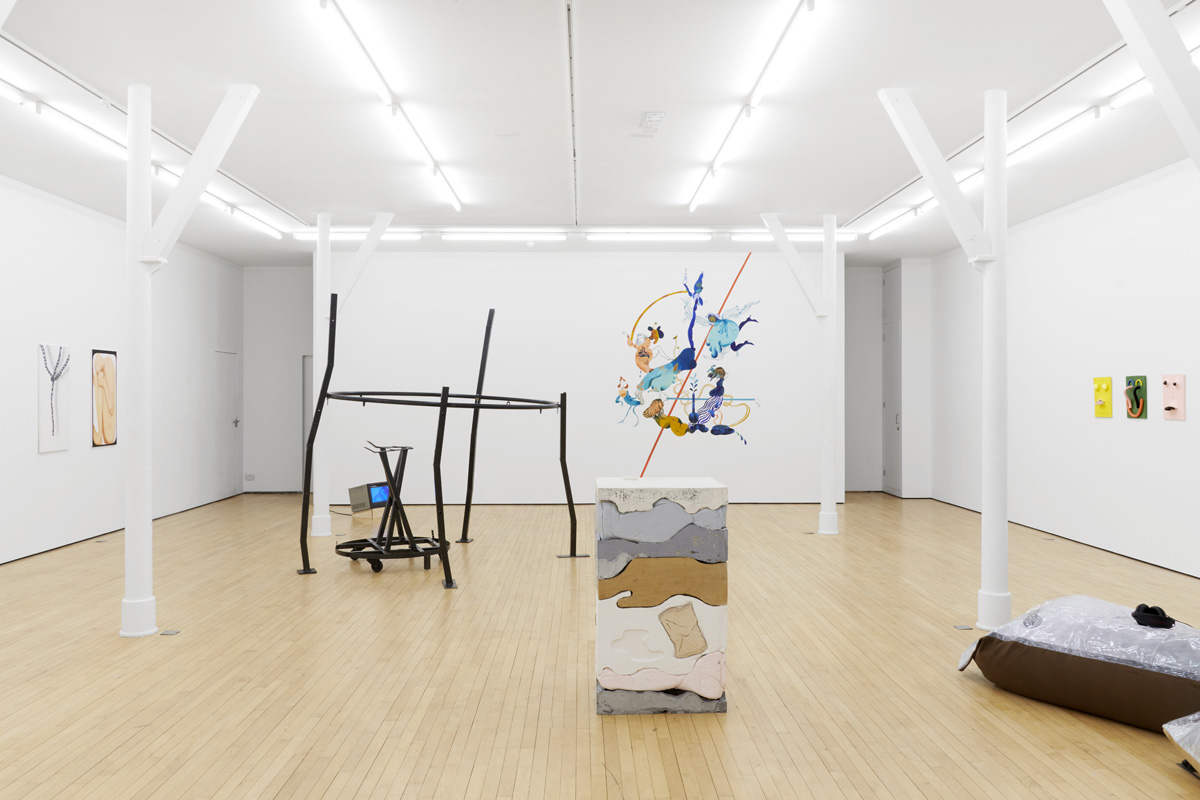
Exhibition views, Assembly Point, 2019


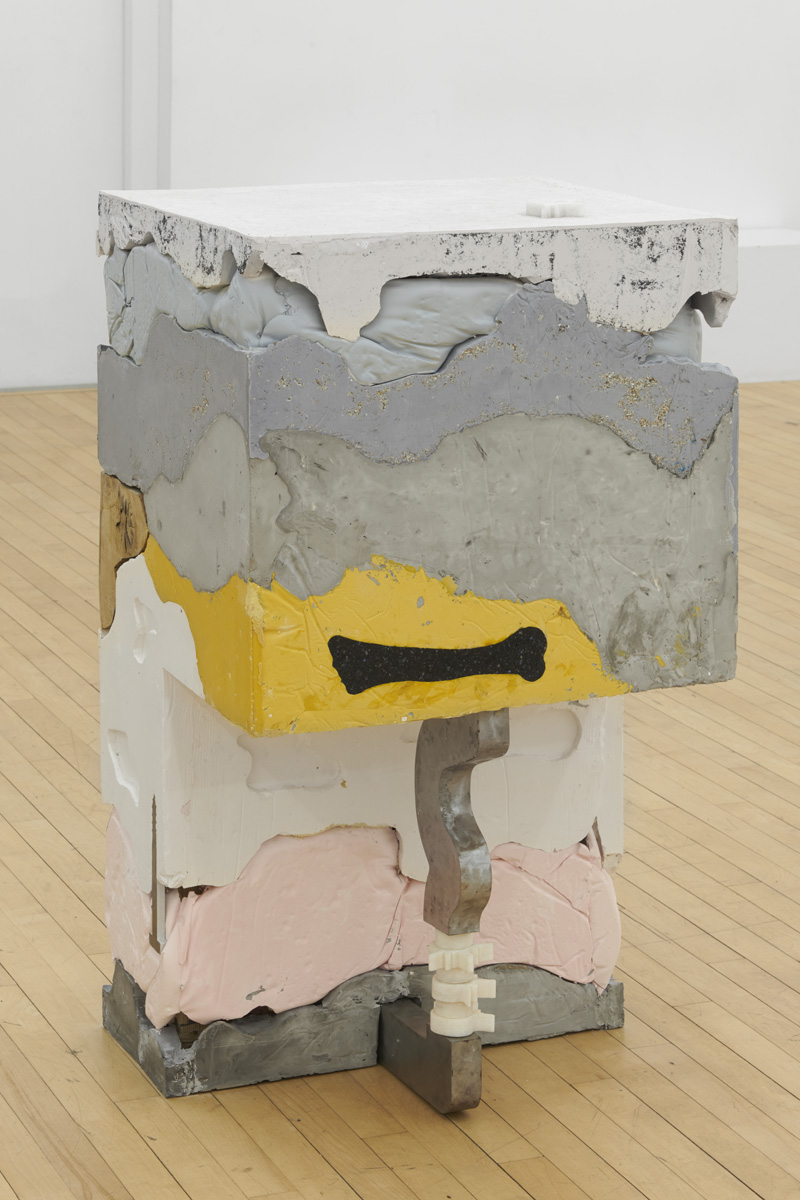

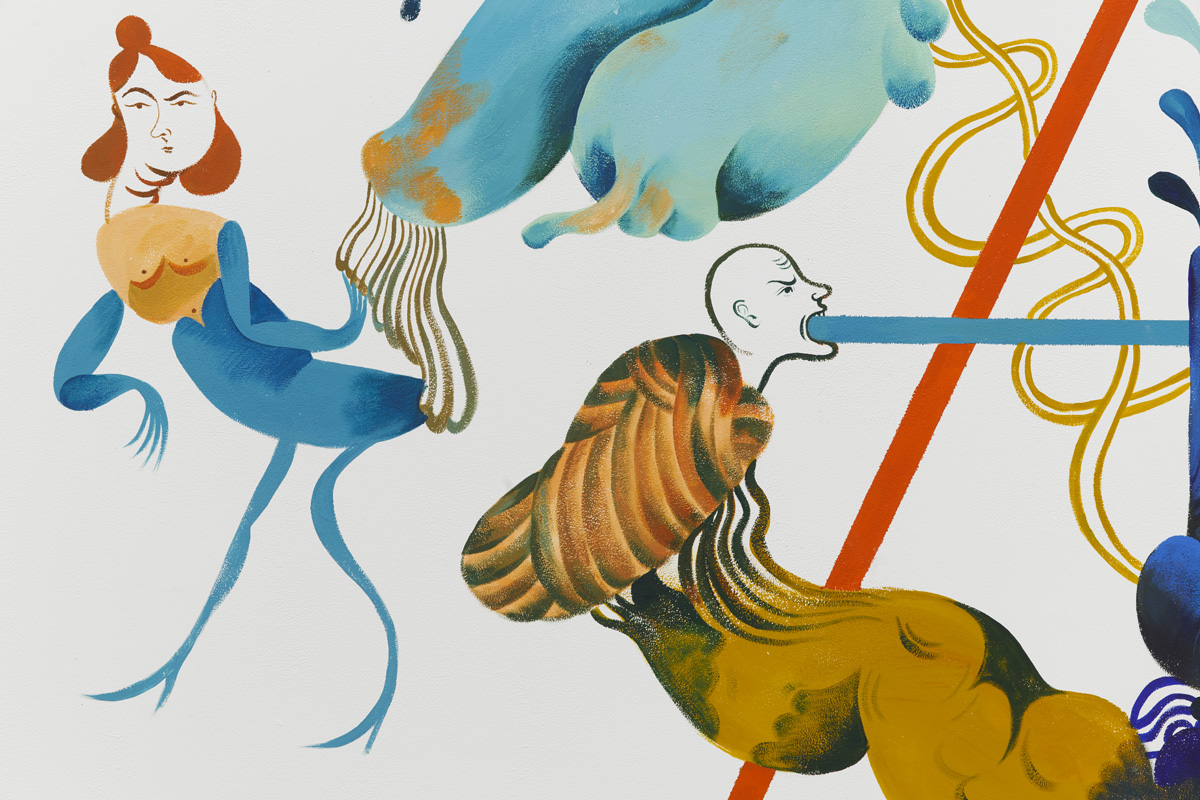
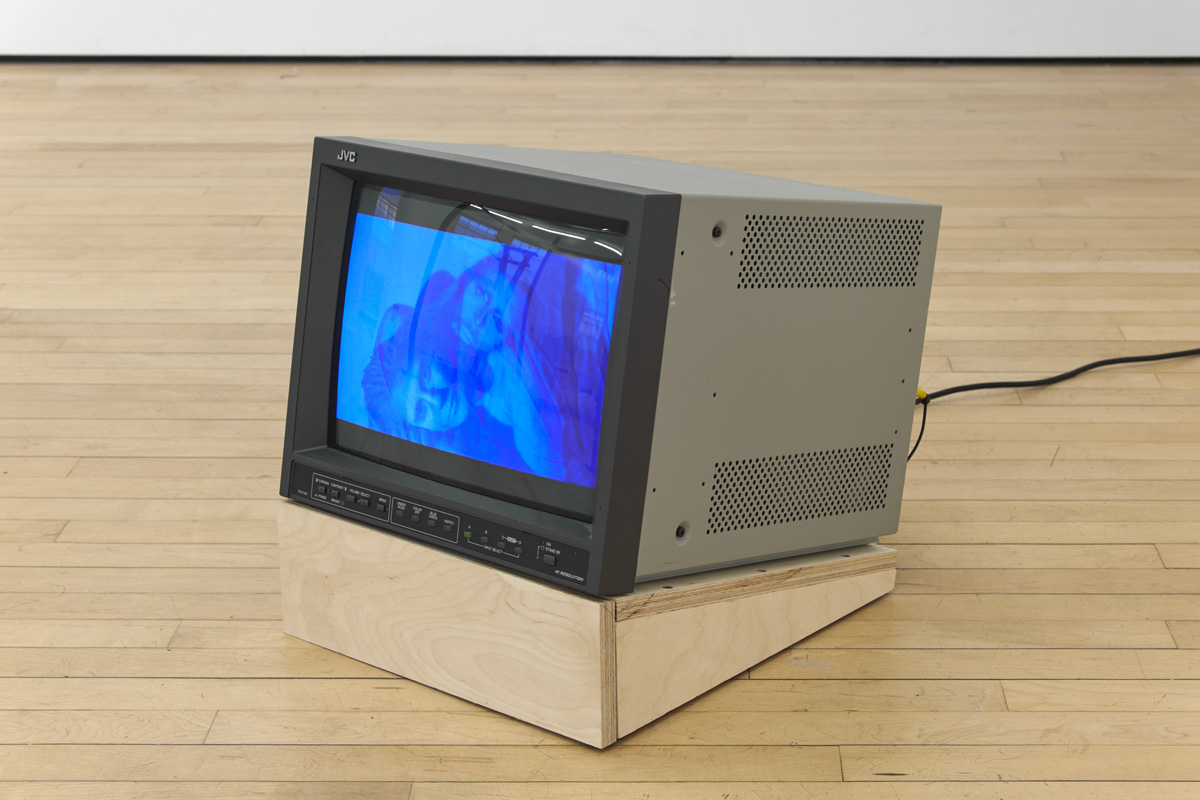

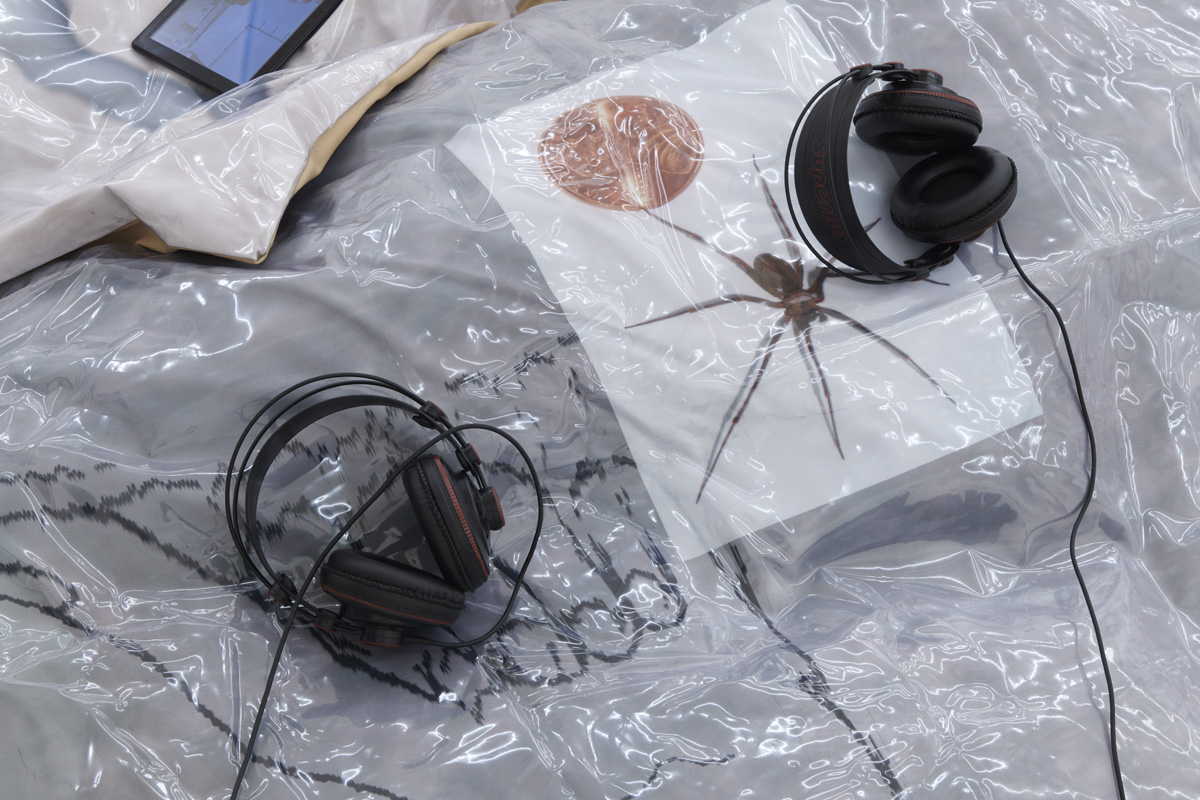


Public Programme
Angels Like Buildings
16 February, 1pm
A newly commissioned performance by Fani Parali.
Angels Like Buildings’ deals with the existence of these other creatures, that are part human, part animal, part spirit, part building. Through their voicing of being – which takes place in and out of their bodies – the work addresses darkness, hope, the need for support, intimacy, fear, and the breaking down of boundaries, whether that’s place or gender or anything else that potentially keeps beings at distance.
Performers: Maxi More and Rachel Porter
Voices: Amina Abbas-Nazari and Elliott Lewis

Alice Bonnot 〰️ ➰